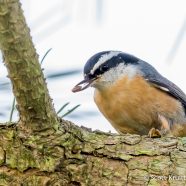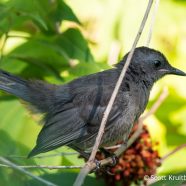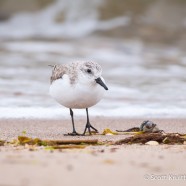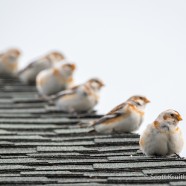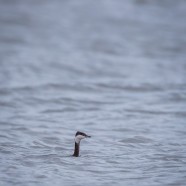Red-breasted Nuthatch Invasion
Who turned the Red-breasted Nuthatch (Sitta canadensis) switch on? The most noticeable trend thus far in this autumn migration has been the appearance of Red-breasted Nuthatches all over the place in the Northeast. Birders have reported them at migratory hotspots, in yards where they are not resident, and even noticeable increases in abundance at locations where they are found year-round. While I have enjoyed hearing their nasal, honking calls and seeing them frantically dashing overhead from tree to tree, I was not able to adequately photograph any of these arrivals until this past weekend....
Read MoreYoung Gray Catbird
The last of our fledglings are finding their way out of the nest now as September nears. This Gray Catbird (Dumetella carolinensis) will have to start forging a path in the world shortly, deciding how far south it has to fly in order to survive. It is a difficult choice – migration is the most dangerous part of a bird’s life, and minimizing it is optimal. However, you may end up facing a much harsher winter with frigid temperatures, snowfall, and less food than a more distant tropical climate. Decisions…
Read MoreSanderling
Here we have a Sanderling (Calidris alba), a bird that spends its winter on our sandy beaches before heading to the High Arctic for the nesting season. They are often misidentified as Piping Plovers during migratory periods as both small, white shorebirds (in nonbreeding plumage for the Sanderling anyway) feed along the water like this. A rufous breeding plumage pattern takes over where the gray is, and by May these birds look unique and spectacular. So much change in so little time…and so much flight distance covered before they nest and head back to us later in the summer. If that...
Read MoreSnow Bunting Row
These Snow Buntings are all lined up and ready to launch to the north soon as they continue to molt into a brighter, whiter snowy color every day. Birds are getting their feathers set for spring and to look their best when finding a mate. What does this arrangement on the roof look like to you? Caption it!
Read MoreLoch Ness Monster?
Loch Ness Monster? Ut oh, it’s surfacing, and it’s looking directly at me! Or maybe not…but close enough in look and unfortunately somewhat in status. Horned Grebes (Podiceps auritus) are listed on the International Union for the Conservation of Nature (IUCN) Red List of Threatened Species as “Vulnerable”. We often do not get to enjoy them close-up like these views I was afforded last week. While their wintering plumage is meant to camouflage them in the water, their piercing red eyes are a bright beacon on even the dullest of late winter days. Keep an eye out...
Read More



